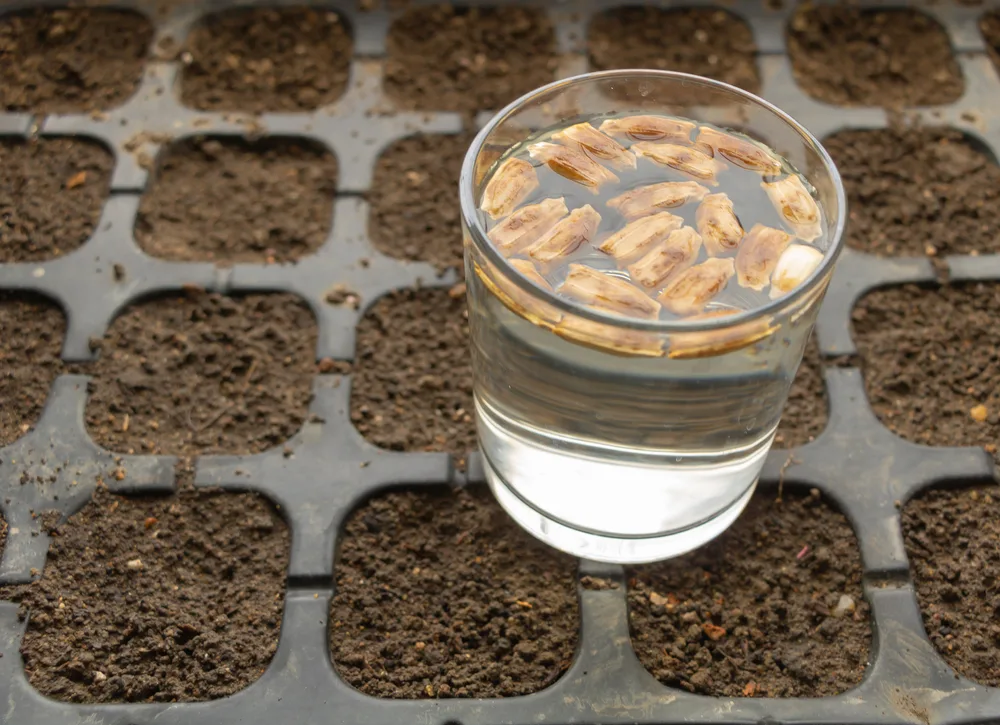For many beginner gardeners embarking on their green thumb journey, the idea of soaking seeds before sowing may sound like a mysterious ritual. Questions arise: Is this practice necessary for seed germination? What benefits does soaking seeds offer, if any? In this article, we’ll unravel the seed soaking conundrum to shed light on whether this treatment is essential and why it’s often recommended in gardening circles.
Understanding Seed Soaking:
Seed soaking involves immersing seeds in water for a specific period before planting them in soil. This technique is primarily used to soften seed coats and kickstart the germination process, especially for seeds with hard outer shells or those that benefit from pre-moistening.
Is Seed Soaking Necessary?
The necessity of seed soaking depends on various factors, including the type of seeds, their germination requirements, and environmental conditions. Here are key considerations:
- Seed Type: Some seeds, such as beans, peas, and morning glories, have hard seed coats that benefit from soaking to speed up germination. Other seeds, like lettuce, radishes, and carrots, generally germinate well without soaking.
- Germination Speed: Soaking seeds can hasten germination by initiating moisture absorption and softening seed coats, leading to quicker sprouting in some cases.
- Environmental Factors: Soil moisture levels, temperature, and overall growing conditions also influence seed germination. Seeds soaked in water may have an initial advantage in drier or cooler soils.
Benefits of Seed Soaking:
- Improved Germination Rates: For seeds with hard coats, soaking can enhance moisture uptake and soften barriers, leading to higher germination rates.
- Faster Germination: Soaked seeds may sprout faster than unsoaked seeds, especially in conditions where moisture availability is limited.
- Uniform Germination: Soaking seeds can promote more synchronized germination, resulting in a more even emergence of seedlings.
How to Soak Seeds:
- Choose Appropriate Seeds: Select seeds known to benefit from soaking, such as beans, peas, and morning glories.
- Soaking Duration: Follow specific soaking guidelines for each seed type. Generally, soaking for 8-12 hours (overnight) is sufficient for most seeds.
- Use Room Temperature Water: Fill a clean container with room temperature water and place the seeds inside. Avoid using hot or cold water, as extreme temperatures can damage seeds.
- Drain and Plant: After soaking, drain the water and plant the seeds immediately in prepared soil or growing medium at the recommended depth.
When to Skip Soaking:
- Small Seeds: Seeds with delicate or small sizes may not benefit from soaking and can be directly sown into moist soil.
- Quick Germinators: Seeds that naturally germinate quickly, such as lettuce or radishes, often do well without pre-soaking.
- Preference: Some gardeners prefer direct sowing without soaking, especially for seeds that tolerate a range of germination conditions.
Conclusion:
While seed soaking can offer advantages for specific seed types and conditions, it’s not universally necessary for all seeds. Understanding your seeds’ characteristics, germination requirements, and environmental factors can guide whether soaking is beneficial for your gardening success. Experimentation, observation, and adapting techniques to suit your garden’s needs are key practices in nurturing healthy and thriving plants from seed to harvest. Happy gardening and may your seeds sprout abundantly!

